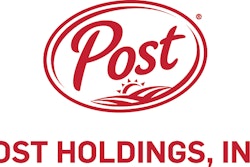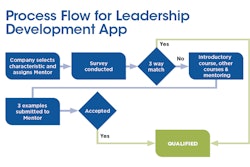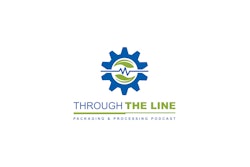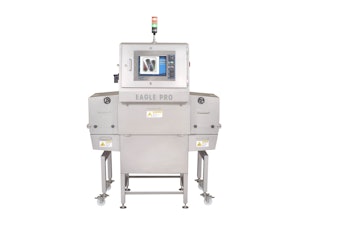In this episode, Rebecca Marquez, Director of Custom Research, PMMI, dives into the world of dairy innovation, uncovering groundbreaking developments in dairy products, from healthier options to sustainable packaging materials. We discuss the surge in healthy dairy products, with reduced sugar and lactose-free options leading the way, and hear how automation is revolutionizing processes while addressing labor challenges too. Gain valuable insights into the future of dairy, from plant-based alternatives to machinery advancements, in this must-listen episode!
Download the 2023 Dairy Industry Report here.
Sean Riley:
So with all the fancy introductions out of the way, welcome to the podcast, Rebecca.
Rebecca Marquez:
Thank you.
Sean Riley:
So we're going to dive into this dairy report. So I guess we'll start kind of high level to begin. So what are some of the big innovations in dairy that were uncovered in this report?
Rebecca Marquez:
There was a lot that we uncovered in this report, Sean, but to kind of kick off this answer is there are really two ways to answer this question. First, there's product innovation. There's really been a push to revitalize dairy's image, and one of the ways in which manufacturers are approaching that is by innovating new dairy products with healthy benefits. For example, we're seeing manufacturers removing or reducing sugar, creating lactose free options, and enhancing products with different nutrients. Product formats are also changing. We're seeing single serve and we're seeing different kinds of packaging, such as more sustainable materials. Sustainability is an interesting area in dairy innovation because traditionally producers were focusing on sustainable production practices like animal welfare and carbon footprint. But now sustainability in the dairy industry carries over into packaging materials, hence the use of more sustainable materials and better transport. The challenges are interesting due to the product requirements because we're looking at barrier properties and stuff like that.
One of the things I really like about this report is how it ties into some of our other products. For example, many manufacturers are making strides towards sustainability, but we're also seeing a move to using more flexible materials, which pose some sustainability challenges. This is absolutely evident in dairy as well, and according to Euromonitor, we use some Euromonitor data for this project. Projected CAGR for flexible packaging and dairy to the end of 2023 is 3.4%, which is high.
This is higher projected material growth in dairy than all other materials with the exception of glass. And we're all used to seeing milk and glass bottles or cream and glass bottles, but it's higher than paper-based containers and rigid plastic, which a lot of us see when we go to the grocery store. This increase in flexibles goes hand in hand with two other dairy innovations, which are the expansion of e-commerce direct to consumer, and the development of shelf stable dairy products. Flexible packaging is really a great vehicle for both of those processes since it makes shipping lighter, more secure, and it's also great for high heat or ultra-high heat and aseptic processing techniques used for fluid milk products.
Sean Riley:
That's interesting because it seems like for most products that are packaged rather, it seems that flexible is increasing in demand and increasing in use. So I guess it makes sense that it would move into dairy as well. And it was interesting the way, I didn't realize that dairy had an image problem, but I guess as you explained, there were some things that it needed to get right, so that's also very interesting as well. So being an industry that obviously involves a lot of people working in it, there a lot of hands-on, a lot of manual labor. There has to be some sort of labor issues because there's labor issues across manufacturing. So I have to think it makes its way into dairy packaging and processing. So I guess what are some of the labor issues that they're facing in the dairy industry?
Rebecca Marquez:
Dairy is not immune to this. Like a lot of other industries, dairy manufacturers are looking to automate processes wherever they can. More than half of those surveyed in our study said they were looking to improve automation as a key operation goal, and almost a quarter said they were exploring upskilling their current workforce. In general, more automation means a streamlined but more technically skilled workforce, hence the upskilling. Automation can also lend itself to better sustainability practices in that it enables manufacturers to capture data that helps them identify inefficiencies in stuff like energy usage and waste that can help control that data capture, can help control energy usage in lines that are idle. Given this move to more automation, we're still hearing that labor is an issue. Finding and retaining skilled labor and getting knowledgeable technicians on site when needed is a challenge still. I should note this is not exclusive to the dairy industry. The effects of COVID are still being felt across the board.
Sean Riley:
I know dairy and I want to say meat processing and stuff like that were really hit hard by COVID and I'm sure it was hard to get people to return. So that's interesting. That's still a couple... Or we're not completely out of the woods with COVID, but a couple years out it's still an issue.
Rebecca Marquez:
Oh, it still is. Yeah.
Sean Riley:
Yeah, that's fascinating. So we've kind of touched on the processing and a bit and we've touched on what CPGs are doing from a packaging standpoint, but how about our members, the people, the OEMs, what do OEMs of dairy packaging and processing need to know based off of this report?
Rebecca Marquez:
I personally think it's a good time for our members, for OEMs. For machinery improvements, the big ask for purchasers of dairy equipment is more efficient and faster cleaning. Again, dairy uses a lot of water and energy. We addressed that when we were talking about sustainability.
So dairy manufacturers want to know how machines can be better designed to make these processes more efficient in terms of a time and energy. Automation is another area manufacturers are looking to increase big time, but cleaning and energy usage also must be kept in mind for providers of automated solutions. The cleaning and safety standards required in the dairy industry are really stringent, so any solution must be workable with those standards. Another thing that we're hearing from CPGs about what their needs are is versatility of machinery. Given the new packaging formats that manufacturers are putting out there, machines aren't always able to process and package multiple sizes and shapes of product. Sometimes they're also a machinery... It's difficult for it to work with different types of materials too.
So versatility is definitely desirable among dairy manufacturers. As far as capabilities, dairy producers are looking for predictive and preventative maintenance. There's a need to quickly understand and remedy failures as they happen during production. That goes right along with the need for predictive and preventive maintenance capabilities. Manufacturers also need knowledgeable technicians and comprehensive operator training. As we see machines becoming more technical, we definitely need to see operators trained on those and to, again, upskill that workforce.
And again, that's not all dairy, but I would say it is a unique to dairy in some cases because the regulations are very stringent in dairy. It's just different than some other products. So it's all about finding and understanding issues quickly and having the dairy manufacturers the ability to get back up and running with a little impact to production as possible.
Sean Riley:
Interesting and predictive is, again, these are all... As you've touched on it with the labor, you touched on it when mentioning other things. These are kind of things that we're seeing across the board, not just in dairy, particularly predictive and preventative maintenance is something that everybody's looking to because everybody wants everything yesterday and as fast as humanly possible. So all this makes complete sense. I guess everyone thinks dairy might be different, but this is so far a report that can kind of apply to everyone, which is a good thing.
Rebecca Marquez:
Yeah, really the only thing that makes dairy kind of different are the regulations around it. I mean, the dairy industry is experiencing a lot of problems that other industries are experiencing, so it's not different necessarily in that sense. Again, I want to stress that this report is really perfectly tied to the other products that BI puts out this. It literally calls out on almost every other topic that we have reported on over the past year, but it's just specific to the dairy industry.
Sean Riley:
Right. Yeah, and again, like you just said, it is good that it's sort of supporting all of the other research as well, is showing that this is happening across the board. So I guess with that in mind, what can we look for in the near future of the longterm for the dairy industry?
Rebecca Marquez:
I think from what we're hearing in the report, I think dairy manufacturers will have some challenges to sort out, which they're already working on. And one of the things you said before is you didn't realize dairy had an image problem. It's not really a problem. It's just I guess more of an update to the image of dairy.
Consumers are becoming more health conscious and perceptions of what constitutes a healthy product are changing. There's also changing consumer behaviors, again, around sustainability. They're becoming more savvy about how their products are packaged. Both of those issues pose some challenges for dairy, and we very briefly mentioned before, such as animal welfare, carbon footprints, product packaging materials, and consumers really want to see in the dairy industry the development of what they feel are innovative products.
However, with that change to that industry, there comes a lot of opportunity for innovation. So we're hearing that there's kind of a move to revitalize the image of dairy, not fix it, but revitalize it. And we also heard that innovation is happening not only in the ways we've mentioned, such as new packaging materials and different sizes, but it's also happening in the area of alternative dairy products like plant-based offerings.
In fact, some of the projections included in our report show that the plant-based dairy products like milk and ice cream are poised to have some of the highest compound annual growth rates out to 2027. That's a big shift, and I think for PMMI members, the future also looks bright. Some of the changes dairy manufacturers are making will require exactly what our members offer, like predictive and preventative maintenance and machinery that will be able to work with different sizes and new innovative materials. So this could point to a lot of opportunity in the development of new packaging equipment or particularly retrofitting offerings. So I would say honestly, the future of dairy looks pretty good from all angles.
Sean Riley:
Yeah, it really does. We hit on some things that were kind of hiccups that they're dealing with, but from all other views it seems that they're managing, if not flourishing, which is great news to hear for the dairy industry as well as our OEMs, our members that are going to be the people supplying the machinery.
Rebecca Marquez:
Yes, absolutely.
Sean Riley:
Well, with that, I want to thank you, Rebecca, for taking time out of your day to come on the podcast with us.
Rebecca Marquez:
Oh, you're welcome. I love doing these






















